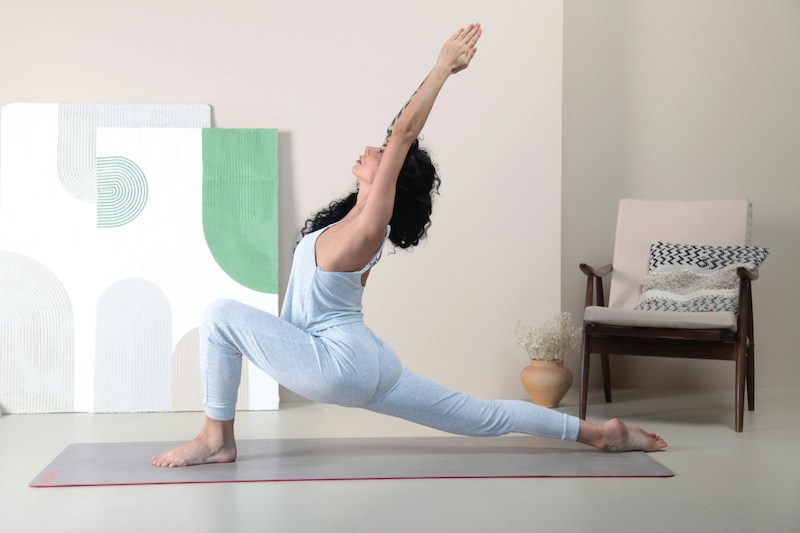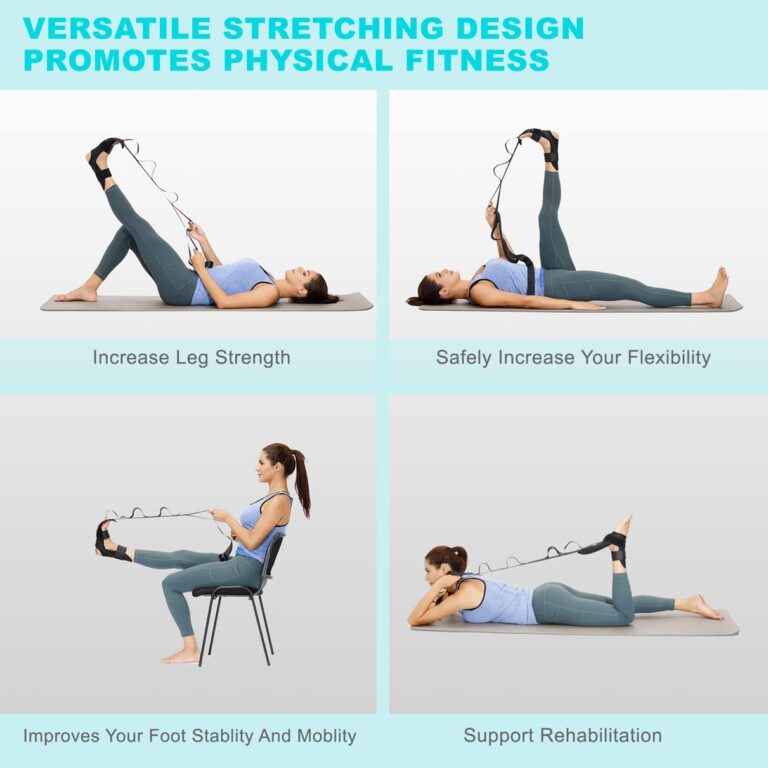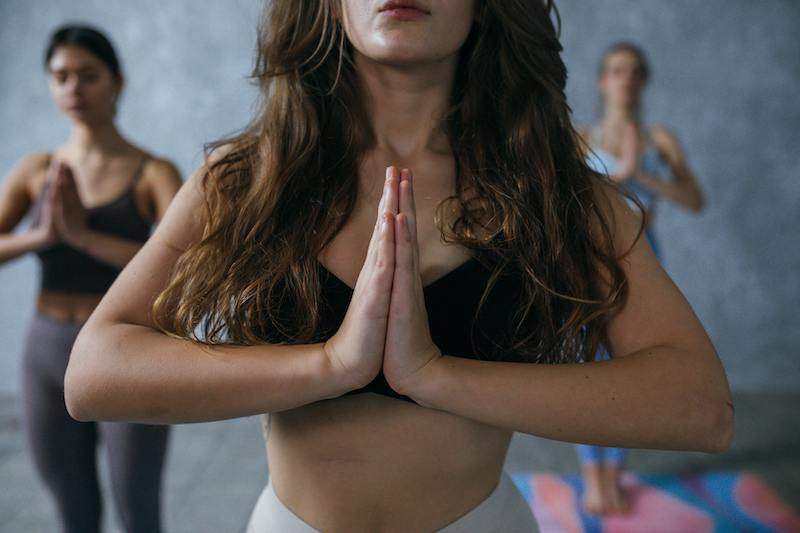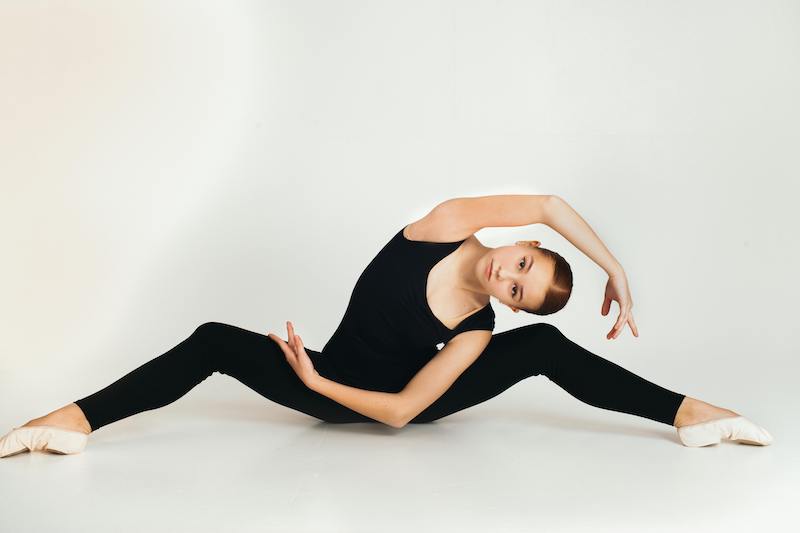I am convinced that our body knows the best and that true healing comes from within. That’s why I am so into somatic techniques, which involve gentle movement therapies that help us tap into our body’s wisdom.
Somatic stretching is a special branch of somatic movements. It focuses on slow and gentle stretches.
It improves flexibility, releases accumulated tension, and promotes mental healing.
This article explains how somatic stretching works and offers beginner tips to help relieve chronic tightness by understanding your unique needs.
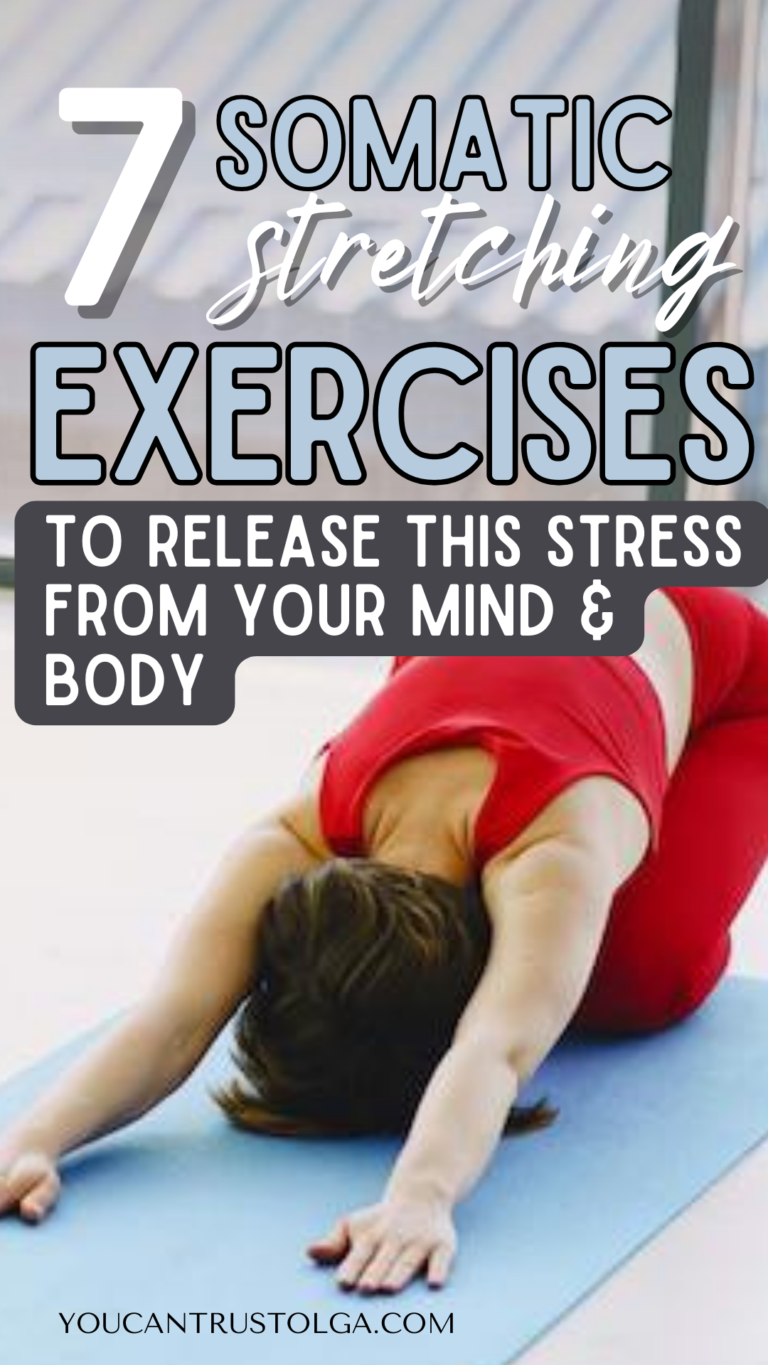
What is somatic stretching?
Somatic stretching is a mindful practice that focuses on the mind-body connection, encouraging relaxation, body awareness, and tension release.
The main objective of somatic stretching is to increase body awareness, especially in areas with stress-related discomfort. Since we are often out of tune with our own bodies, and only notice discomfort when it reaches its peak.
Unlike traditional stretching which relies on external force or weight to stretch the muscles, somatic stretching uses INTERNAL CUES and GENTLE MOVEMENTS to release muscle tension and promote relaxation.
This approach is especially beneficial for individuals with chronic pain, stiffness, or limited range of motion.
How does it work?
Somatic stretching works by activating the body’s natural reflexes and neuromuscular pathways through slow, deliberate movements.
These movements target specific muscles or muscle groups, engaging them in a mild contraction followed by a gradual release. This process allows the muscles to relax and lengthen, increasing flexibility and reducing tension.
Benefits of somatic stretching
Improved Flexibility: Somatic stretching can help increase the range of motion in joints and improve overall flexibility, making daily activities easier and preventing injuries.
Pain Relief: By releasing muscle tension, somatic stretching can provide relief for chronic pain conditions such as fibromyalgia, arthritis, or back pain.
Stress Reduction: The slow, deliberate movements used in somatic stretching promote relaxation and can help reduce stress and anxiety.
Better Posture: As somatic stretching targets specific muscles that contribute to posture, it can improve overall posture by releasing tension and promoting proper alignment.
Increased Body Awareness: Somatic stretching encourages individuals to become more attuned to their body and its movements. This increased awareness can lead to better coordination and balance.
Release of Pent-Up Emotions: The gentle and mindful nature of somatic stretching can also lead to the release of negative emotions, stored in the body. This can provide a cathartic experience and improve overall emotional well-being.
7 Somatic stretching exercises
Somatic stretching exercises are simple to practice, ideal for novices, and only demand a few minutes of your daily schedule.
Here are seven uncomplicated somatic stretching exercises for beginners that can enhance your flexibility, energy levels and mental healing.
1. NECK STRETCH
The neck release is a calming somatic stretch designed to alleviate tension and stiffness in the neck region.
- Start by sitting comfortably with your feet planted and your spine lengthened.
- Gently tilt your head towards your right shoulder, experiencing a mild stretch along the left side of your neck.
- Stay present with the sensations – whether it’s a tingling feeling, a sense of pulling, or relief – without passing judgment. Take deep breaths as you maintain this position mindfully.
- Then, return to the center on an inhale before repeating the slow, attentive tilt to the left.
- Transition back and forth while breathing deeply, allowing gravity to delicately release the tension in your neck muscles.
- Feel the muscles gradually relaxing, one nerve at a time, as you kindly address the persistent tension you hold in that area.
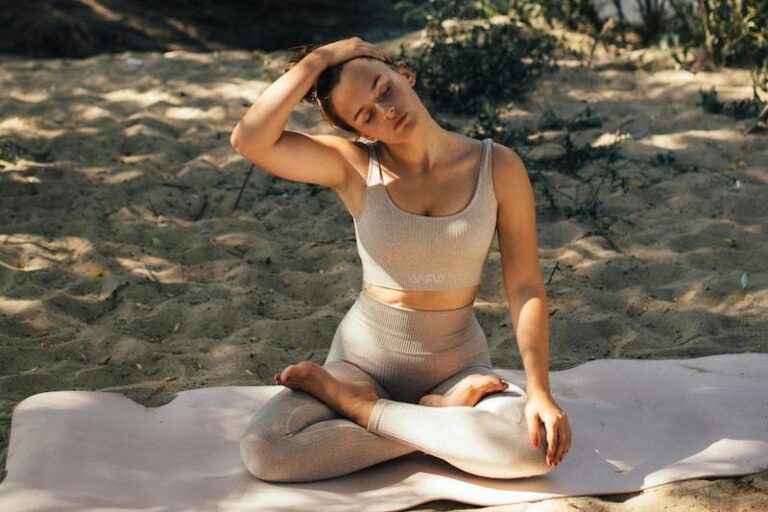
2. HANG YOUR HEAD
Engaging in forward and backward bends can enhance neck mobility, facilitating smoother movements of tilting your head upwards and downwards.
- Lower your chin toward your chest.
- Hold for 5 to 10 seconds, feeling the stretch in the back of your neck. Return to neutral.
- Bring the chin toward the chest again, only this time use your hands to add more pressure.
- Stay there feeling the stretch, without overdoing it. Let the natural weight of your hands gently deepen the stretch.
- Slowly return to neutral and shake out any tension in your neck muscles.
- Repeat this sequence as needed, allowing your body to find its natural state of balance and ease.
Yoga Bolster Pillow
Upgrade you somatic practice with yoga bolster pillow. This special cushion is used for added support for the body during meditation, somatic stretching or just simple relaxation.
3. SEATED SPINAL TWIST
This exercise is great for stretching and strengthening the muscles in your back, hips, and abdomen. It also helps to release the tension stored in those areas.
- Sit on the floor with your legs extended in front of you.
- Cross one leg over the other so that the foot is flat on the ground next to the opposite knee.
- Twist your upper body to face the bent knee while using your hand to push against the outer thigh for a deeper stretch.
- Hold for 10 seconds, then switch legs.
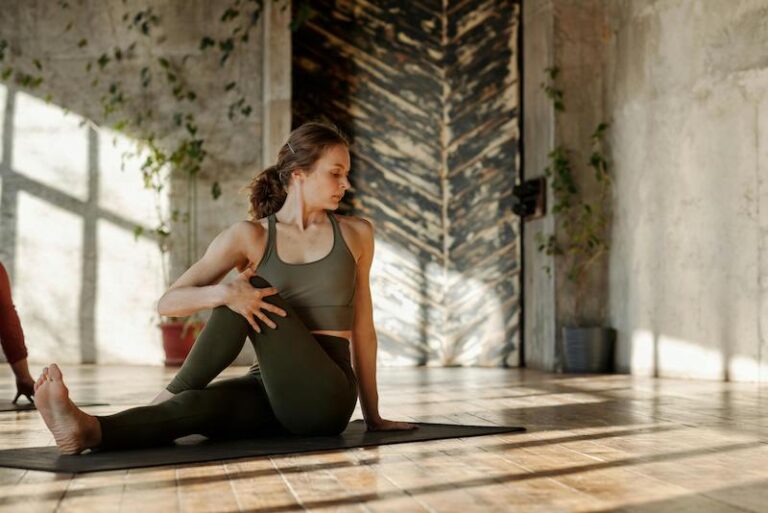
4. BRIDGE POSE
Bridge Pose involves a slow movement exercise done on the floor to release and regain control of muscles in the lower back and abdominals.
- Lie on your back with knees bent and feet hip-width apart. Relax in this position effortlessly.
- Place your arms by your sides or on your lower belly to focus on your breath.
- Inhale deeply into your lower belly, roll your pelvis forward, arch your lower back, and stick out your belly gently.
- Exhale gradually, releasing your lower back muscles to return to the starting position without engaging your abs.
- Repeat several times
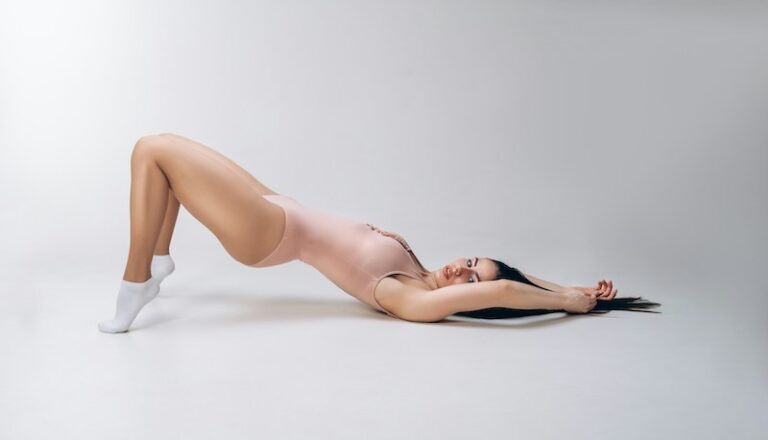
5. WATERFALL
The Waterfall somatic movement offers a gentle and soothing way to release tension along the spine, promoting relaxation and flexibility in the body.
- Lie on your back with your hands on the floor beside you, palms facing up.
- Bring one knee up to your chest at a time, then extend both legs upward, keeping your knees slightly bent if more comfortable.
- Hold for a few gentle breaths.
- To exit, bend one leg into your chest at a time, then place both legs on the ground.
- For added support, elevate your hips with a block or use a wall.
6. CHILD’S POSE EXERCISE
Child’s pose is a gentle stretch that targets the hips, thighs, and ankles, while also promoting relaxation and reducing stress and fatigue. It can alleviate back and neck discomfort when performed with proper support for the head and torso.
- Start on your mat in a kneeling position, with your big toes touching and knees hip-distance apart.
- Inhale to lengthen your spine, then exhale as you fold forward, bringing your forehead toward the floor in front of your knees. You can also create soft fists with your hands and rest your forehead on them for added comfort.
- Keep the back of your neck long, open your shoulders, and allow your belly and chest to relax toward the floor. Adjust your knees as needed to enhance your breathing space.
- Relax your arms by your sides with palms facing up near your feet.
- Take deep breaths, relax, and feel the stretch deepen as you release tension in your back and surrender to the pose.
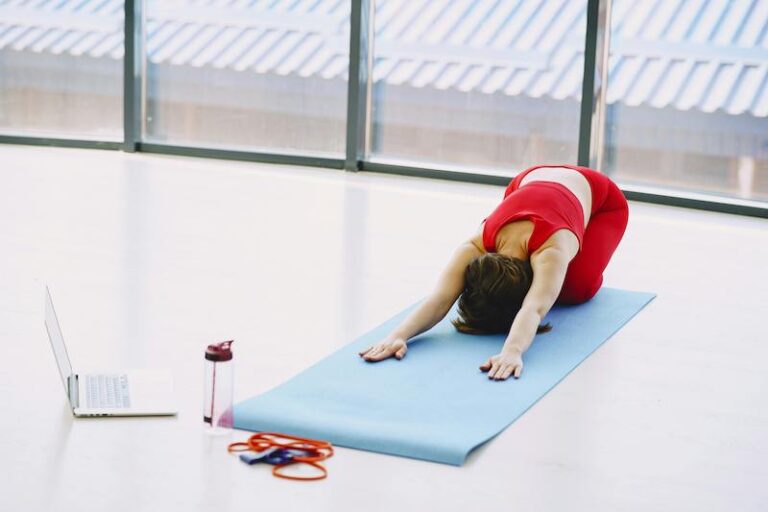
7. SOMATIC SQUATS
Stretching the body somatically before squats can enhance flexibility and range of motion. When engaging in somatic stretching for squats, focus on gentle and mindful movements. These routines aid in releasing muscle tension related to the squatting motion.
1. Begin by standing with your feet shoulder-width apart and toes slightly turned out.
2. Notice how your body feels as you gradually lower into a squat with each step. Concentrate on relaxing the hip flexors and letting the pelvis tilt naturally as you descend.
3. Utilize your breath to ease into the stretch and deepen your awareness of bodily sensations, a key aspect of the somatic approach.
4. Slowly return to standing from the squat, staying mindful of how different body parts contribute to the movement.
5. Repeat this series multiple times, observing any variations in muscle tension or sensation with each iteration.

